
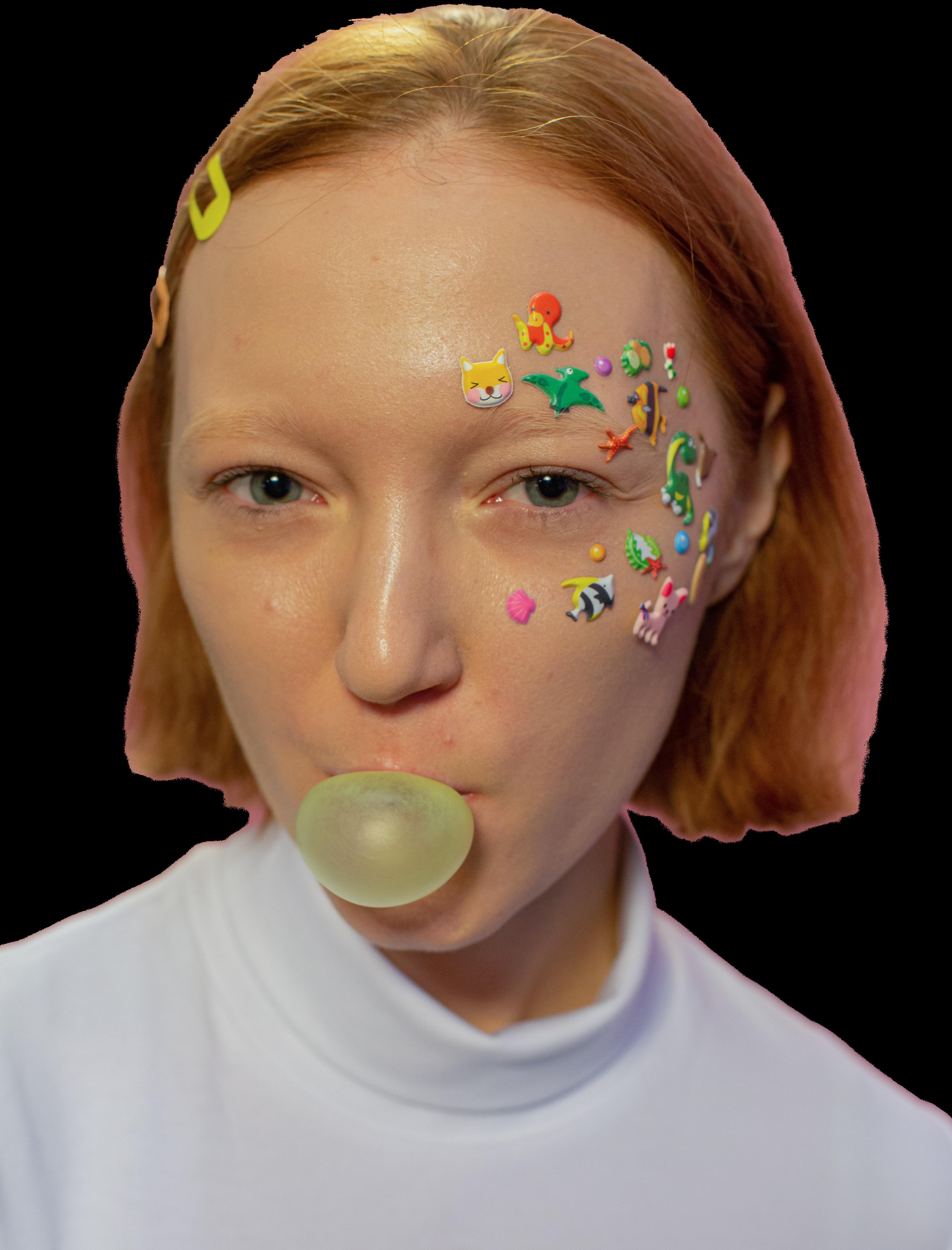
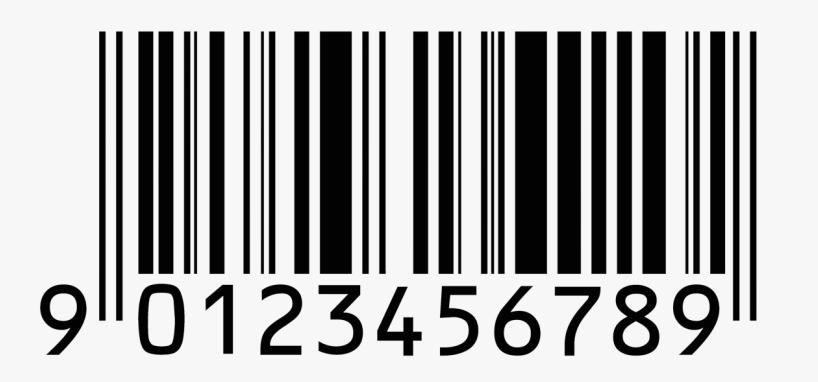









bull&bear WINTER 2023 FREE bullandbearmcgill.com A Guide to the ULTIMATE Montreal MAKEOVER! Fostering Community in LESSONS FOR OUR Y2K Is IN! Fatphobia is OUT! Promise vs. Pattern: Totally to the MAX! YOLO! The Issue Unconventional Ways Younger Selves McGill Fashion is The Untold Potential of Victor Wembanyama pg. 4 pg. 14 pg. 18 pg. 22 pg. 28 McGill’s Queer Community Comes Together pg. 6 pg. 8
As young people with the burden of an increasingly disheartening future, it can be over whelming to think about the many things wrong with the world around us.
TheWinter2023YOLOissueisourcollectiveresponse:combatingpes-
simism with a harkening back to the bright colors and boundless dreams of our childhoods. In this magazine, we stepped away from the doomsday-feeling news and sought out stories of optimism and joy, from the unusual ways McGill students foster community to how we’re healing relationships with the self. This issue comes out as spring is returning and we’re in the fnal weeks of the long school year. Enjoy the sun, the summer break, and remember, you only live once!
editor’s note




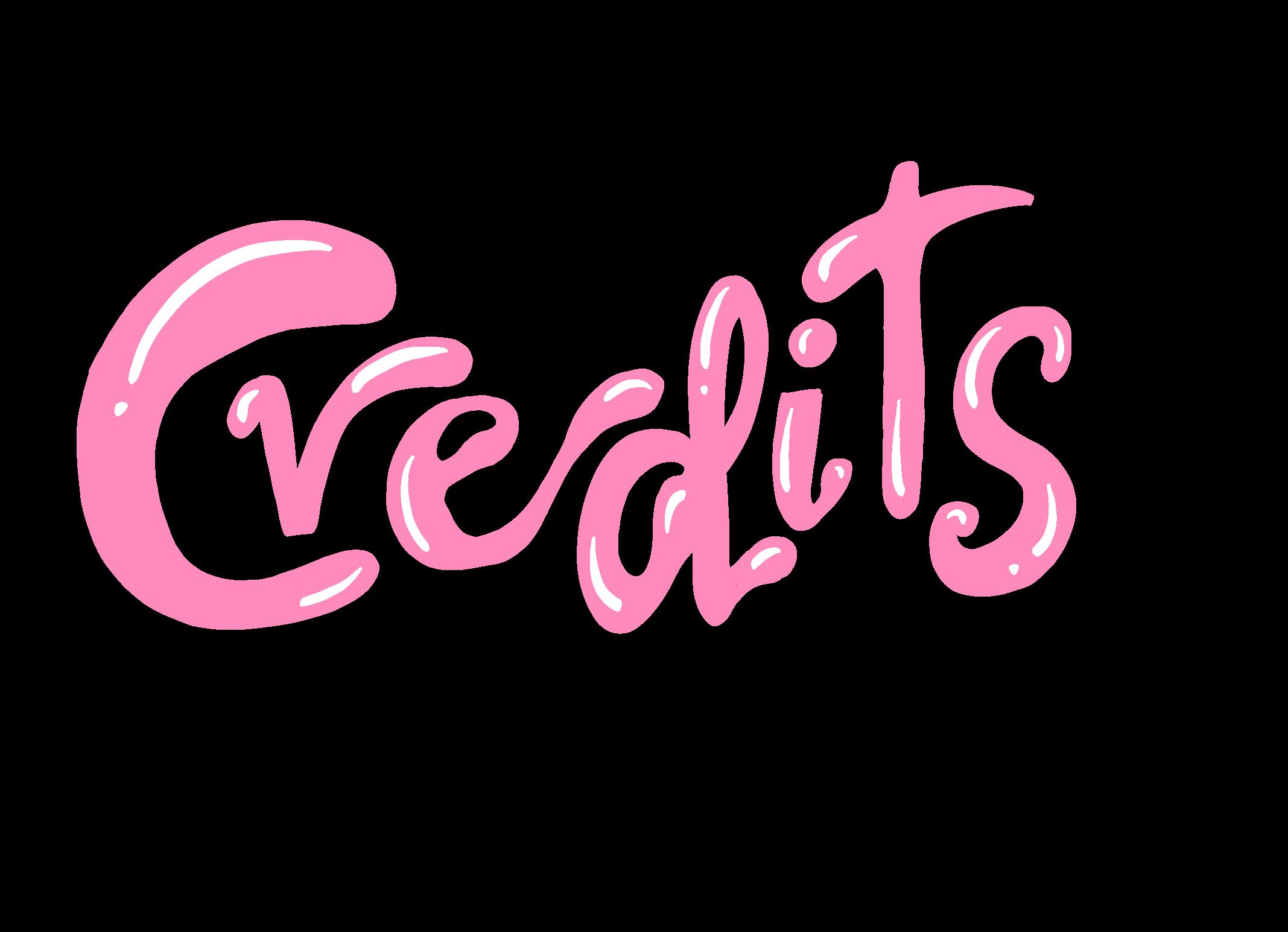

 CLAIRE CHANG, EXECUTIVE EDITOR
CLAIRE CHANG, EXECUTIVE EDITOR

executive board
EXECUTIVE EDITOR
Claire Chang
MANAGING EDITOR
Sarah Sylvester
Georgia Soumakis, Rishi Kohli, Katharine van Steenburgh, Diksha Sharma, Leila Ghanem





TABLE OF CONTENTS 3 arts and culture news opinion sports 22 26 30 Feature: Fostering Community in Unusual Ways McGill’s Queer Community Comes Together: Protest Against Sex vs Gender Debate An Interview with Sasha Kleinplatz: Finding Joy Through Performance Art Totally to the Max: McGill and the Resurgence of Maximalist Fashion The Charm of Attending Small(er) Concerts Y2K is In, Fatphobic Attitudes Are Out Confessions of a Tree Planter Todd Boehly’s Plan for Chelsea 4 Feature: A Guide to the Ultimate Montreal Makeover Feature: Lessons for Our Younger Selves Feature: Promise vs Pattern -- The Untold Potential of Victor Wembanyama 6 8 12 16 18 14 28
cGill University has a lengthy history, beginning in 1821 with founder James McGill. This history is shaped by academic and scientifc accomplishments, community events, changing political landscapes, and most of all, the students and faculty. The clubs, activism, opinions, and sense of community generated by McGill’s students creates a culture which extends beyond its formal written history. Recently, this sense of culture has been extended to online platforms; the McGill community in 2023 is shaped by both the on-campus events and Reddit, Instagram, and YouTube posts.
An essential aspect of McGill’s internet history and culture are the YouTube videos students make about their experiences attending the school. Watching these videos is the begin ning of incoming students’ experience of McGill student culture and gives them a glance into what living in Mon treal has to offer. These videos discuss life in residence, things to expect be fore attending McGill, and tips to suc ceed both academically and socially. In one video titled ‘11 Must Know Things Before Studying at McGill University,’ which has garnered over forty-fve thousand views, Desautels graduate Will advises incoming students on mentally approach coming to university.
The comment section of this video is flled




with incoming and future students saying how helpful it was for them to know what to expect. Another video titled ‘McGill Residence. Dorm Tours. Pros & Cons. Rankings’ by Ben Comeau includes four current students discussing their rankings and the reputations of each residence. One comment on this video reads “I love this, I’m trying to fgure out where to live because I just committed,” while another says “I have watched so many rankings… this one helped so much!”

Second-year Urban Studies student Aidan Solway stated, “Before coming to McGill I would spend countless hours watching vloggers on YouTube
show their life in res and university life to make sure I knew what I was going into. It defnitely helped me to some extent but nothing compares to the actual experience of being at university.”















The indirect communication which occurs over the internet allows for McGill students to develop shared jokes and references. The instagram account @spottedmcgill has garnered nearly 10,000 followers by posting student confessions, quotes about professors, and stories about the campus squirrels. These posts create a sense of culture within the vast McGill community and allow individuals to share their stories. Many of the posts on this account are people speaking about students around campus who they have noticed or would like to get to know. One reads, “I need to know if the Gerts barista with brown hair is single because he has the cutest smile I’ve ever seen and I can’t stop thinking about him.” These posts generate a feeling of unity within the school and can allow people to connect who would not otherwise.
Another, more rudimentary way students have documented their history is through messages written in washrooms around campus, letting the walls speak - literally. Students memorialize their cultural history through witty phrases, encouraging messages, advocacy and wellness stickers, and other creative washroom-related messages. Picture this: you and a stranger enter adjacent bathroom stalls in the basement of Burnside and you imme-
4
diately overhear your bathroom-buddy let out a chuckle. You instinctively look to the side where the laughter came from and see a note written on the stall “Be gay. Do crimes” and laugh as well, a common experience recounted by students, professors, and visitors coming through any one



posts provide something the hand-written messages cannot: time stamps. Your favorite notes in campus washrooms are ever-growing and quintessentially separated from time. Unless you see new additions in spots you frequent, there is no way to tell when they were written.
McGill University has a rich and vibrant cultural history refected through its Reddit page. This platform documents the various activities, advice, campus icons, lore, and conversations between students, together creating an integral part of student life.
not just loved by the students at McGill, as evidenced by a remark about her archnemesis, a fully black-furred squirrel on the UofT campus. Cloudberry’s reputation precedes her, and her fans are not limited to just McGill.

of McGill’s washrooms. These additions to the walls document thoughts and anonymous conversations between students who will never meet.
A few fan-favourites collected by the Bull & Bear News writers include a phrase in Russian with a hammer and sickle below it – which a non-Russian speaker would think is a Communist message but is actually “I love to poop;” an encouraging “piss like there is no tomorrow :)” to fellow future pee-ers; an inspirational “BE SOMEONE” on the toilet paper dispenser; a request in a faculty-only washroom to “PLEASE TURN AROUND
The McGill Reddit page is home to a wealth of information about the university, including fun facts and general knowledge. For instance, one user from eight years ago, @morerum, shared that the sign for the tunnels at McGill — which can be seen around campus — is a snail. Another user, @ respectfullyyours, shared the history of Burnside Hall, which was originally James McGill’s home built in 1775. It earned the name Burnside because of the burn – a type of waterway that refers to a large stream or a small river – that used to run through campus.
The McGill Reddit page is a testament to the cultural history and vibrancy of the university. From general knowledge to campus legends, this platform captures the essence of student life at McGill. With Cloudberry as a beloved campus celebrity, it is clear that the McGill community is not just made up of humans but also of the charming and ever-present squirrels that add a touch of magic to campus life.
The messages shared on YouTube,

TO

MAKE SURE EVERYTHING OKAY!!” because even faculty sometimes struggle to maintain order in washroom stalls.
r/McGill has documented messages in bathrooms around campus that have likely been around for almost a decade. @AaznTiger posted their favorite message on the ceiling above a urinal in the bathroom next to Gert’s that says “go home, you’re drunk,” and stated that “every time [they] read it, [they] know it’s right.” On the same thread, @CatanOverlord shared their favorite puns written between the grout of the walls in the ground foor Leacock washroom: “the grout wall of China,” “The Grout Gatsby,” and “some men are born grout, while others have groutness thrust upon them.” These

However, it is not just facts and history that are shared on the McGill Reddit page; there are also numerous conversations about the campus celebrity, Cloudberry. Students often document their sightings of the leucistic squirrel, from her jaywalking adventures to her preparations for winter, and even her daily transformations, as noted by @ NoBrightFutureForMe, who remarked that Cloudberry is becoming rounder every day. There are also various theories about Cloudberry’s motivations for jaywalking: *need to put picture in print issue* Some users speculate that she is playing a game with other squirrels to win money, while others believe that she works in mysterious ways we humans will never understand, as suggested by @Fml-idratherbeacat. Despite the different theories, one thing is certain – Cloudberry is a beloved part of the McGill community. She is affectionately captured in photographs and posted by students on the Reddit page, with user @actually_a_sheep referring to her as a “majestic and wonderful critter.” However, Cloudberry is
Instagram, campus washrooms, and other non-traditional community spaces record students’ recent shared culture. These platforms facilitate new conversations and help unite students, fostering the McGill community in unconventional ways. As students develop new ways of documenting their history by sharing messages and personal experiences, McGill’s tens of thousands of students will help bond the community together.
NEWS 5
McGill’s Queer Community Comes Together

Protest Against Sex and Gender Debate
by Carly Rabie





On Tuesday, January 10th, the Centre for Human Rights and Legal Pluralism (CHRLP) at McGill hosted an event called “The Sex Vs Gender (Identity) Debate In the United Kingdom and the Divorce of LGB from T.” This event sparked concern in the McGill community, particularly the queer community, due to its potential to spread harmful anti-trans rhetoric. Organizations Queer McGill and RadLaw McGill along with Celeste Trianon, a law student at Université de Montréal, organized a protest outside the building during the event. Over two hundred protesters rallied against the debate, forcing the event to be canceled part way through.
The event discussed lesbian, gay, and bisexual (LGB) rights and the divorcing of the ‘T,’ (representing transgender individuals), from LGBTQ+. The debate was intended to cover issues pertaining to trans rights, like if certain laws make it easier for transgender people to change their legal sex or how to address exceptional situations like “women-only spaces and sports.” The description of the event on the CHRLP website stated that in these exceptional situations, “the individual’s birth sex should take priority over their gender identity, regardless of their legal sex.” The description of the event on the CHRLP website mentions how the sex vs. gender debate inspired the
LGB Alliance organiza tion, which “rejects the coalition of LGB and T and challenges some transgender demands, because they confict with the rights of lesbian and bisexual women or the rights of children.” Trianon disagrees with this claim and asserts that “queer rights and trans rights are very much interconnected.”
The event featured Robert Wintemute, a professor of human rights law at King’s College London. Wintemute is a lawyer for the LGB Alliance, a U.K.based organization that advocates for LGB rights and opposes the LGBT agenda and its stance on transgender issues. The LGB Alliance Twitter bio further says that the organization “promote[s] the rights of lesbians, bisexuals & gay men, as recognised by biological sex.” According to the website lgballiance.info critiquing the LGB Alliance, the group is “a homophobic and transphobic internationally recognised hate group” who have campaigned against bans on conversion therapy, been unsupportive of gay marriage, sued the biggest European LGBTQ+ charity, Stonewall, and advocated for transgender exclusion from gendered spaces.
This event raised great concern among McGill’s queer community. In a Facebook post about the protest, Queer McGill stated that the event “has the real potential to increase transphobic violence and undo trans rights.” The post further states that “the trans community at McGill already faces incredible oppression from society and should not be subject to debate on their basic rights and freedoms.” In an interview with the Bull & Bear, Gender, Sexuality, and Feminist Studies (GSFS) majors Adeline Quas (U2) and Shannon Salick (U3) voiced their concerns regarding this event. Quas explained that they saw the event as harmful because it is “confrming the insecurities” many trans people have about whether they belong in the LGBTQ community. As a trans person, Quas also shared that the sex vs. gender and divorcing of LGB from T debate is an “attack on [their] identity.” Salick expressed their disagreement with the entire premise of the event explaining that “you don’t
6
just go around debating rights” because rights are “non-negotiable, it’s something that should be and has to be given.” Additionally, they expressed concern for the BIPOC trans and queer community, explaining that this debate over trans rights “harms [BIPOC trans people] the most.” In an interview with the Bull & Bear, Trianon commented on “the irony of [the Centre’s] name,” as an organization with “Human Rights” in their name is breaching transgender human rights by giving a platform to this debate.



The protest had a turnout of over two hundred people, which, according to attendees Quas and Salick, flled up the entire hallway outside the event room and overfowed onto the stairs and outside of the building. Quas shared that the protest “felt like the community coming together” and was “feeling like this is a space we can all
belong in.” Salick described the experience of partaking in the protest as “stressful,” but “empowering as well.” Further, both Quas and Salick, as well as Trianon, described the people at the protest as being members of the trans community and allies from both in and outside of the queer community.

As stated in The McGill Tribune, CHRPL co-director, Frédéric Mégret shared that Wintemute approached the centre about hosting this event. Trianon commented on Wintemute’s request to speak at McGill, sharing that she believes this is “a clear sign that Robert Wintmute came in with an agenda, and that agenda is to spread transphobia,” since it is customary for hosts of such events to reach out to speakers, not the other way around.
Since the protest, Trianon has received hateful and threatening messages online. Trianon shared with



the Bull and Bear that “many of [the hateful messages] include ‘go kill yourself’ type threats” and threats “calling [them] a Nazi.” As well, Trianon has received opposition from people who are “trying to defend free speech.” However, she has countered that these people are in fact defending a version of free speech called “free speech absolutism,” which argues the rights of free speech are inalterable, even when they impede on other rights.
McGill has stated that it “does not endorse the views of the Alliance or of any speaker.” Additionally, in an email from McGill to the Bull & Bear, the university stated that the CHRLP puts on speaker events to “serve as a platform for critical conversations on topics that can be productively and robustly discussed in an academic setting.” Trianon has made clear that she disagrees with this notion and that McGill, whether or not they agree with Wintemure, is still “platforming hate” by hosting him to speak at the university. Further, the email shared that “McGill recognizes and supports the rights of its students to peaceful protest on campus.” Information about and traces of the event have been removed from the CHRLP website and other McGill-run platforms.
On January 12, the SSMU shared an email with the entire school community describing McGill’s decision to host this event as “not only insensitive, it was unacceptable.” Additionally, the SSMU has made it clear that it “supports students and groups that have mobilized to make their voices heard and stand together for a more inclusive university.” Through these protests, McGill’s queer community successfully came together and demonstrated a passion for change, showing that camaraderie and action can be effective.

7 NEWS
“Queer rights and trans rights are very much interconnected.”
Montreal
Makeover
By Hannah Murray and Jacob Sponga
As snow melts, temperatures rise, and McGill students across Montreal wake from the hazy slumber of winter semester hibernation, many of us are in desperate need of a makeover. The word ‘makeover’ often conjures up nostalgic memories of fashy montages from Y2K romcoms: think chunky statement belts, mini skirts, and glittery eyeshadow; however, as arts and culture editors, we dare to suggest that a makeover involves more than just changing your outward appearance (although, that certainly can be a fun part of it!). Makeovers can involve anything from treating yourself to a new cuisine; picking up some new books to read; and, of course, changing up your closet, hair, and makeup. And what better place to give yourself a makeover than Montreal? Home to some amazing hair salons, clothing stores, libraries, cafes, spas, restaurants and more, Montreal is a fantastic city to indulge in a makeover. YOLO, right? Dust off your sunglasses, switch out your snow boots for sneakers and be sure to check out these recommendations to spice up your look and treat yourself as we head into summer!
a guide to the ultimate Bishop & Bagg

The new you needs an old haunt, of course. Bishop and Bagg, a pub located on Saint-Viateur, has probably some of the best pub food in Montreal, maybe some of the best pub food we’ve ever tasted. Personal highlights would have to be the lamb kebabs and the jerk chicken—both of which pair excellently with the mounted deer’s head. A true pub should be (A) generally wood-paneled and (B) imprinted everywhere by vaguely English-resembling insignia. Rest assured that the all-new-you will fnd both criterium amply met: the building here is palpably historic and some heraldry is never far from your periphery, be it stamped on a pint glass or embodied in the good-cheer grin of one of many jolly pedestrians who, in the summertime, promenade leisurely and gregariously by the open-air storefront with maws literally watering at the sight of your food, at your delectably mysterious drink that oozes desirability. The place is located in a great spot, city-wise, too—you’re not far from a warm bag of bagels at St-Viateur Bagel nor a fresh bag of denim at Jeans Jeans Jeans; generally, the new-you may fair well in situating this approximate intersection at the crux of your new character. That’s all to say that Bishop & Bagg is a place for rejuvenation, as is any good watering hole.
Le Magasin Du Chaînon

This one may ruffe some feathers; however, as bonafde thrift cultural-commentators (see previous Bull & Bear print issue!) we feel that Le Magasin Du Chaînon wholly deserves its place on this list, despite its unabashed omission of various bells and whistles and general air of early-aughts anachronistic anarchy. The ethos of both the thrift store and the makeover is fundamentally one of change—thus consequence— and, in all honesty, we see no better place to take a risk on the latter than the former. You deserve a neon green imitation-mink coat. You deserve that pair of vintage Docs peering out at you from between intergenerational footwear. You deserve a refreshed bookshelf (i.e, a makeover for the soul) dotted with inexpensive and manifestly chic French and English books. You nearly require a whole host of other obscurities and textile detritus—because if you’re not labouring for that diamond in the rough (although, we might say, this isn’t exactly the ever-formidable bins), are you really trying at all? It’s true that the ethos of a thrift store is change, but “change” proves a relatively low entry-point—any marked-up, half-stained Bart Simpson tee from ‘93 in a well-lit, galleryesque space on Saint Laurent can make a claim to “change’’ or “trendsetting” or whatever. What one might imbibe stepping across the threshold of Le Magasin du Chaînon is authenticity. And this, my friends, is the hallmark of a new you in used clothes.

8
Nothing to wear? Check out Marche Floh’s insane collection of vintage clothing, streetwear pieces, and accessories galore. Spanning three foors, Marche Floh is any fashion lover’s dream. The vintage shop is home to a huge and varied curation of clothing that can be integrated into any closet: perfect for anyone looking to discover their signature spring style. Leather jackets, vintage jeans, silky lingerie, funky blouses, and go-go boots are just some of the treasures nestled throughout the store. Marche Floh also works with local vendors and artists from Montreal and the surrounding area, encouraging creativity and self-expression through fashion. In the context of this Montreal makeover guide, Marche Floh is the place to go to fnd a statement piece and revamp your wardrobe.
Marche Floh Maison




Garçonne

Maison Garçonne offers a variety of decor items, accessories, personal care products, and even a small selection of clothing. This cute boutique prioritizes Quebec-based artisans and brands created by female entrepreneurs. Perhaps the cherry-on-top of this already wonderful store, Maison Garçonne is home to one the best candle selections we’ve seen in Montreal. From teeny-tiny wildfower scented ‘candlettes’ to giant, bergamot amber scented candles, and even trendy ‘bubble’ shaped candles, Maison Garçonne is truly the ideal place for a candle-lover. You will fnd that the boutique also offers a selection of hand creams, facial products, and perfumes. Maison Garçonne is defnitely a must-stop of this makeover guide - the perfect store not only for changing up your own look, but also perhaps your apartment’s ambiance.
Chez Jose

Let’s face it: makeovers can be exhausting. After (or perhaps even during) a long day of shopping, walking, and ‘makeovering,’ sustenance is defnitely in order. Located in the heart of the plateau, Chez Jose is a family-owned business that has been in operation for over twenty-fve years, and specializes in Portuguese-inspired breakfast, brunch and lunch options. They offer a variety of vegetarian, vegan, and meat-based dishes. We recommend trying their Portuguese breakfast dish. You absolutely can’t leave Chez Jose without sampling their pasteis de nata - an authentically rich and decadent egg custard pastry originally from Lisbon, Portugal. Throughout the summer and fall, the restaurant offers outdoor terrace seating that overlooks the cobblestoned and mural-lined street of Duluth. Overall, Chez Jose is a great spot to unwind and enjoy a delicious meal while on this makeover journey.
Bizarde
Located on the corner of St. Laurent and Duluth, Bizarde specializes in edgy, layered haircuts and vibrant hair-coloring services. Debating getting that sleek Uma Thurman-inspired bob? Considering going but ter blonde? Hot pink? What about that choppy Suki Waterhouse cut saved in your camera roll? Look no further than Bizarde. The salon’s friendly staff are accommodating and always willing to go that extra mile to help you achieve the perfect haircut. Plus, Bizarde’s eclectic and vintage-inspired decor - think ceiling murals, chandeliers, and mid-century modern furniture - is a work of art in its own right. Bizarde keeps their services simple with a base rate for regular clients and a special discount for students, although pric es can occasionally vary depending on the service provided. If you’ve been looking for a sign to change your hair: this is it! Head over to Bizarde and let the makeover commence!

ARTS AND CULTURE 9
bizarde
Address: 4051 St.
Laurent, Montréal, Quebec H2W 1Y7
chez jose
Address: 173

Duluth Ave E, Montréal, Quebec H2W 1H4
le magasin du chaînon


Address: 4375 St Laurent Blvd, Montréal, Quebec H2W 1Z8
As summer approaches and the end of the semester nears, has so much to offer, and this list only accounts for a ative senses tingling and your adventurous spirit revving. twenty-something in Montreal once! (Or twice?)

10
GRAPHICS BY ANNETTE ARCHAENI
nears, why not treat yourself to a makeover? Montreal tiny portion of it; however, we hope it gets your crerevving. Afterall, sometimes change is good. You’re only

marche oh
Address: 4301 rue St. Denis, Montréal, Quebec H2J 2K9
maison
garçonne

Address: 3656 St Laurent Blvd, Montréal, Quebec H2X 2V4

bishop & bagg pub
Address: 52 Rue St. Viateur O, Montréal, Quebec H2T 2K8

ARTS AND CULTURE 11
BY ANDY GOLDBERG
Finding Joy Through Performance Art
An Interview with Sasha Kleinplatz
The intersection of dance and modern art at choreographer Sasha Kleinplatz’s “We Move Together or Not at All” and “Miracle’ing/Close to Me/ Close to You” provides a space for creative expression that is unlike anything I’ve seen before. Kleinplatz’s two intriguing performances offered me with a new perspective on modern performative art. “We Move Together or Not at All” involves an improvisatory performance by a single performer engaging in interpretive dance inside a miniature greenhouse. “Miracle’ing/Close to Me/Close to You” is a more abstract group production that comments on the nature of performance and practice. I had the pleasure of sitting down with Sasha to discuss her background, the performances, and her perspectives on life and art. Here are some of the key
parts of our discussion, the entirety of which is published on the Bull & Bear’s website.
Tell me a little bit about your upbringing and how you got interested in dance and choreography.
I grew up in Windsor, Ontario, which is right near Detroit. I started liking dance when I was really little, like three or four. I saw “The Nutcracker” or “Swan Lake” and I was really into it, but I didn’t start taking class[es] until I was ten. Also, when I was around ten, I saw Alvin Ailey, which is a modern dance company from the U.S., and that was really inspiring. I was kind of infuenced a lot by being part of the indie rock scene and the rave scene in the nineties, so both of those communities and aesthetics were important to me in the way I thought about performance.

In “Miracle’ing” there was a lot of subtle and some not-so-subtle humor. Do you think that helps loosen the bounds of the formality of performance, and do you think it makes the performers more comfortable in that improvisation?
I don’t know if it makes them more comfortable. They have oftentimes told me that they’re not comfortable, but they move between comfort and discomfort. I do think the permission to be silly is helpful, and another thing that I’m interested in is improvisatory comedy, and when people break. There’s something so human about it, so breaking is a very welcome part of the process, and it doesn’t have to be hidden. I think it allows the audience a different kind of window into the work.
How does the improvisation differ between “We Move Together or Not at All” and “Miracle’ing” and is there a substantial choreography difference between coordinating the improvisation for an individual versus a group?
Yeah, it’s somewhat different. For [We Move Together or Not at All], what we talked a lot about, is that each of the dancers has a solo practice that they do, and it’s part of what they do on a regular basis. So how can you translate your solo work and your
12
GOLDBERG
Kleinplatz
solo research into this other being, this plant being. In the group piece, we really didn’t talk about ‘soloness’ at all; we talked about ‘individualness,’ but that feels different from ‘soloness’ to me.


One thing that I’m always curious about with artists is if they have advice for younger people on how to pursue their artistic goals? There’s such an emphasis today on taking the so-called “safe path” in life. Do you have anything you would say to people who are struggling to pick a path in life?
I can tell you what I think, but what I think is not the happiest thing. It’s not unhappy, it’s just maybe more practical than (how) people want to think. I knew two people, one of whom worked in a doctor’s offce or a physiotherapist’s offce, and another who worked in a hospital as an administrator, and they’re two of the most exciting Canadian artists I know. They spent years working nineto-fve jobs, and they worked on their art during nights and the weekendsand they were fnancially stable. They didn’t have to go into debt to work on their art. I think people sometimes think that in order to do art, they have to give everything up and

live this precarious life, and what I realized from these people - Dana Michel and Bridget Moser - is that they didn’t have to put themselves in a fnancially precarious position, to my knowledge. And Bridget particularly has talked very openly about that choice she made, and how it made her life stable in a way that actually allowed her to make better art in some ways.
Sasha’s last response especially resonated with me. I have been pursuing flm, music, and writing for years now. However, I’m also approaching a point in my life where I must make some crucial career-defning decisions. While I enjoy business school, and I have a strong passion for marketing and operations management, my two felds of study, I frequently worry that I won’t be able to pursue my artistic goals when I enter the workforce. I absolutely agree with Sasha’s point that one can work and be an artist concurrently. Going into the world of business shouldn’t mean that I have to give up on journalism and music, and hopefully I won’t.
Usually, I prefer to write analytically and in the third person, but this topic is deeply important for each and every one of us to consider. I’m going to include a piece of personal advice: as cliche as this may sound, we only get one chance here on Earth, and you’re selling yourself short if you don’t make some effort to pursue your artistic dreams, or any other dreams for that matter. Like Sasha touched on, working a nine-to-fve job and pursuing one’s passions are not mutually exclusive. They only are if you let them be. I am incredibly lucky to even have the opportunity to pursue my passion for art in the frst place. If I don’t do whatever I can to fulfll this opportunity, will I truly be able to look back and be satisfed?
ARTS AND CULTURE 13
Through GRAPHICS BY ANNETTE ARCHAENI
McGill and the Resurgence of Maximalist Fashion
BY MAREN DUFFIE


Maximalism is back! Across McGill’s campus, from the library to class, McGillians embrace crazy colours, intricate layering, extravagant jewelry and abstract makeup. Maximalism, which can present in an infnite number of aesthetics, found its roots in the years following the Second World War when people were eager to express themselves after years of rationing and restriction. Where our modern version of the aes
broadly defnable concept of maximalism, but what does this look like in the day-to-day within McGill’s context? Maximalism is often thought of as bright, eye-catching, and overall impractical; but forms of maximalist style and design are all around us. As students attempt to distinguish themselves while also maintaining the ability to make it up the hill to McMed for their 8:30 a.m. class, moon boots, fur coats and statement jewellery are go-to’s for the maximalist Montreal student. From the icon Dolly Parton herself to that stylistically over the top girl in your econ class, people are adapting forms of pseudo-maximalism to express themself without impeding their ability to move freely. Outside of the classroom, y2k and ‘McBling’ aesthetics embrace velour and glitter in the various themed parties of the McGill ghetto.
In contrast to McGill, if you’ve ever made the pilgrimage to Queen’s or Western for Foco or St. Patty’s, you’ve most likely encountered more Aritzia Melina pants than what the mainstream would consider to be maximalist fashion. Why does maximalism seem to thrive at McGill compared to many other Canadian universities, especially those in smaller towns? McGill’s urban environment places it’s students within walking distance of everything from the eccentric earrings available in Chinatown to the abundance of curated vintage stores in the Plateau.
In a world of overconsumption, maximalism may seem like an irresponsible direction for the future of fashion, but in the search for unique pieces, fashionistas across the world are turning to sec-
ond-hand suppliers and DIYs for cheap, one-of-a-kind pieces. Beyond that, shopping at non-chain thrifts, like Le Chainon on St Laurent, support local organizations and allow you to let your maximalist heart run wild. If venturing past Park isn’t your style, McGill also boasts student clubs and pop-ups that encourage artistic expression through minimal consumption. Organizations like circle of fashion (@circleoffashionmcgill) and P(h)assion (@phassionmcgill) inspire students to embrace both maximalist and groovy choices by supporting McGill’s up-andcoming fashion designers and bringing the fashion community together. There are also clothing swaps hosted around campus by great student-run initiatives that will keep your bank balance high and creativity fowing, all while minimizing your carbon footprint. Fashion Revolution McGill (@fashion_revolution_mcgill) and the SSMU have hosted multiple swaps this semester.
If you fnd yourself in search of inspiration off-campus, there are a number of sources that I can personally recommend. In a more traditional sense, you can draw from houses that have reached mainstream success, including Vivienne Westwood or Moschino. Alternatively, lesser known artists like Who De-
 GRAPHICS BY VIVIAN CROOKS
GRAPHICS BY VIVIAN CROOKS


cides War embrace graphic-heavy streetwear and Conner Ives’ bright, geographic designs are spearheading a new age of over-the-top design. If going straight to the source doesn’t quite ft into your study schedule, check out magazines like Virtus and Boy.Brother.Friend which curate lookbooks flled to the brim with originality both in their featured looks and overall presentation.
For me, I like to draw from creators that are on the platforms I’m already using, such as Instagram and TikTok. Courtney Covino is a tattoo artist who mostly makes makeup tutorials and shares outft snapshots on her Instagram, with her style embracing grunge and rock infuences. Alternatively, Sarah Campo and Kristen Bateman are major magazine columnists working everywhere from Vogue to the New York Times to Elle, who both share their personally-curated neon-heavy outfts, and the latest from fashion weeks around the world on TikTok. If the fashion world is completely foreign to you, perhaps you can fnd your muse in the non-fashion arts through painters such as Kate Pincus-Whitney or far-out classics like Lisa Frank. In the age of the internet, access to maximalism is right at your fngertips, and all you have to do is click enter.
The modern maximalist story unravels by breathing new life into old pieces.

Maximalists receive double-takes. They question stylistic choices. They reimagine utility and re-dictate what matches or what doesn’t. They exaggerate colour through both variation and repetition. Though their ideology of “more is more” may seem daunting, they are our recycling future. Curating your own personal style allows you to truly feel like you exist outside of the fast-paced trend turnover we have become too familiar with. Whether that means sticking to the basics or completely getting out of your comfort zone, don’t let companies or others tell you how to style your life! Maximalism provides a fresh perspective on the world—overrun with “clean girl” aesthetics and business casual Desautel students. McGill’s culture allows its students to be eccentric, and I encourage each and every one of you to take advantage of this.

ARTS AND CULTURE 15
The Charm Of A ending Small(er) Concerts
By Gaëlle Perron

Entrenched in the desperate year of 2020, continuously stuck in the four walls of my childhood bedroom, I discovered good music. Having spent most of my adolescent years listening to Top 100 radio, which looped the same ten songs over and over, I had been lulled into an Ed Sheeran-esque trance of mediocrity. Left with too much time on my hands, and, admittedly, with help from TikTok recommendations, I started building up a repertoire of music that resonated with me. I flled the silence with melodramatic ballads, gratifying instrumental sections, and compelling lyrics. When I was all out of songs to discover from my newest artist of the month, I turned to videos of live performances, obsessing over the raw talent they showcased, their stage presence, the roar of the crowd.
I thought about my own concert experiences, which had been sporadic but memorable all the same. I had seen some of the big names of my childhood perform elaborate choreographed shows with props, dancers, and fre sparklers. I had also seen some smaller bands, fnding fame only in the Québecois scene—a microcosm of the music industry. I cherished those memories,

16
PHOTOS BY ISABELLE CÔTÉ
remembering my shrill screams of excitement when my idols rose up in glittery costumes, the pride I felt adorning the overpriced merch, and the ringing in my ears the next day.

However, in this new era of my musical appreciation, I yearned for more intimate events. The artists I now liked no longer only consisted of A-list stars with the budget for such extravagant productions. Yet, even through a screen, the performances I watched emanated a completely different sense of what live music could inspire. I started to value the music itself, untethered from impressive shows of electronics, lasers, and balloons falling from the ceiling. I became thoroughly consumed with the desire to be part of the experience I was watching, yearning to be in that crowd. I waited two long years before that wish was fulflled.
When my favorite artists began to announce their tours, best believe I was the frst in the line, despite the obvious headache of having to rely on Ticketmaster. In the last year, the concerts I have attended have made some of the best nights of my life, the most recent of which having been bestowed by Weyes Blood.


The night was an impressive presentation of the artist’s newest album, along with a few songs from her 2019 release. After an interesting, yet slightly confusing opening act—who knew whistling was an art-form?—the stage was decorated with a gorgeous display of candelabras holding (I would assume) fake candles. Midway through the concert, Weyes Blood’s heart began to glow under the white fabric of her dress, earning screams of delight from the surprised audience. Glowing heart aside, the only other technological addition was a projector, used throughout to accentuate the moodiness of the songs, and to reveal the visuals of documentary-maker Adam Curtis during one particularly bewitching rendition of “God Turn Me Into a Flower.”
For the most part, though, the concert’s entertainment value rested solely on the music itself, relying on the talent of the band and the singer. And they did not disappoint. The musicians accompanying the frontrunner were all talented in their own right, blending phenomenally with Weyes’ powerful voice. They transitioned from the gentle melodies of “A Lot’s Gonna Change” to the folky and upbeat “Everyday,” satisfying my secret penchant for guitar solos more than once.
What’s more, Natalie Mering, who bears the name of Weyes Blood while singing, was nothing short of mesmerizing as she stepped out and onto the stage. As she immediately commanded the venue with her voice, I found myself closing my eyes, goosebumps rising as she began her performance. I turned back to fnd my friend sobbing as Weyes continued to frolic in front of us. I caught one of the roses she threw into the crowd after it bounced
off the head of a man in front of me, which found all four of us jumping excitedly. She played all my favorites, surprising us with “Picture Me Better” as the second encore.
I left the venue in a state of absolute contentment, happily stuck with the ghost of her voice ringing in my head on the metro ride home. I thought back to the path my musical taste had taken, which led me to this strange, almost ecclesiastical artist. I smiled at the thought that I was still keeping the promise I made myself years ago, actively seeking to make live music an integral part of my adult(ish) life. As mainstream artists continue to spike their prices to egregious amounts, I hope to be able to continue enjoying the enchantment of the talents of lesser-known singers. In a sense, this deviation away from the fanciful distractions displayed by big names and the return to an authentic understanding of live performances as an artform is what truly revitalized my love of music.
ARTS AND CULTURE 17
Lessons for Our Younger Selves








 BY BÉRENGÈRE FOUQUERAY
BY BÉRENGÈRE FOUQUERAY

With my third year at McGill drawing to a close, it has hit me that my university experience was both exactly like, and yet entirely different to, what my high school self had envisioned. Growing up, I attended a relatively small school that emphasised student engagement and espoused this rhetoric that we could all go on to change the world. It made being exceptional feel easy; changing the world (as cliché as it sounds) felt within my reach because my school made it feel like it was. It flled me with an unchecked ambition that left very little room for failure. I told myself I would carry my ‘can do,’ world changing attitude into university. Unfortunately, I hadn’t accounted for two things: 1) how small going from a 400-person high school to a 20,000+ person university would make me feel and 2) the fact that my senior year of high school and frst year of university would be absolutely decimated by a pandemic.
As people around me began talking about their summer internships, their research opportunities, or the clubs they were involved in, I began to feel increasingly out of my depth. I had gone from being an incredibly involved student to feeling washed-up at the ripe age of twenty. In my mind, I was letting my younger self down — she had taken every opportunity that
came her way and ran with it. School plays, conferences, panels, she had done it all and she had loved it. Meanwhile here I was at university, growing increasingly frustrated with the silent




expected to carry on full steam ahead. As this year draws to a close, I’ve come to realise that many of us have not been patient with ourselves.


expectation that I should be devoting much more of my free time than I was to building up my resumé. I felt an incessant pressure to be doing internships every sum mer and to join as many clubs as possible, all with the end goal of eventually attending graduate school.
While the world had come to a stop for al most two years, students were
According to the 2020 American Psychological Association Stress Report, not only are stress levels among adults aged eighteen to twenty-three on the rise, they are also signifcantly higher than the stress levels reported by other generations. In fact, of the respondents who attend university, 87% attributed school as a primary stressor. These statistics also failfects of the pandemic, which has most likely


OPINION 19
So to my younger self: it may feel like university will dictate the rest of your life but it won’t. And it may feel like you need to have everything figured out by the time you are 21 but you don’t. in fact, I doubt most people ever do.
GRAPHICS BY VIVIAN CROOKS
exacerbated these already unprecedented levels of stress.
We, as a generation, need to have patience and compassion not just for others, but for ourselves. It has taken me almost three years to understand that it’s ok to need more time to reach a certain stage in your life; after all, there is no timeline on self-actualisation. Just because you deviate from what your younger self had envisioned, does not mean your goals are no longer attainable; sometimes you simply set yourself up for failure without noticing it. Ambition is healthy but it can quickly become toxic if you do not allow yourself room to stumble. So to my younger self: it may feel like university will dictate the rest of your life but it won’t. And it may feel like you need to have everything fgured out by the time you are twenty-one but you don’t — in fact, I doubt most people ever do. You will learn that, while comfortability is not always a bad thing, it can very easily turn into complacency. You should try new things — though you may not always enjoy them — and push yourself out of your comfort zone — even if you may not always want to. And most importantly, be sure to grant yourself the same kindness and patience you give to those around you.
 BY Alia Shaukat
BY Alia Shaukat




When I am much older, I hope not to feel a whole world caught between my mouth and my throat. That is to say –– I hope not to have a long list of regrets, sprawling like a drugstore receipt that’s stuffed in between two books. I hope not to have my notebooks empty, hoarding dust underneath the coffee table. Most of all, I hope not to feel ashamed of the life I choose to live.
I realize this introduction may seem superfuous, but as a soon-to-be graduate, it’s diffcult not to be encompassed by this pressing prospect of regret. After all, the end of this chapter marks the start of a new one –– and at the moment, what awaits me feels less than thrilling. Post-graduate studies, job applications, interviews, rent, taxes, and an overarching sense of self-suffciency are needed for entrance into this adults-only club.
And as I’ve only just begun to dip into the inevitable (picture me: still holding onto my Frosh mug for dear life), one of the biggest shocks I’ve repeatedly come face-to-face with is the problem of commodifed creativity and the far-reaching effects of capitalism. The commercialization of art has existed for centuries, and its presence can even be argued as early as the Renaissance when the church commissioned art like the Sistine Chapel not for its beauty, but for its advertise-
ment of Catholicism. However, commercialization has taken a sharp turn in recent years as capitalistic competition only rises. From NFTs to Jeff Koons to AI generations, art is now created to serve a distinct purpose: feeding demand (Marx & Engels are rolling in their graves as we speak, I’m sure of it).
Certainly, as any good art student, I’ve been aware that capitalism is fastly encroaching on creativity for some time now, yet my recent dive into the corporate world made it obvious on not only the global scale but the personal one. When reviewing job openings online, practically every single posting seeks creativity –– creative problem-solving, creative thinking skills, creative design –– despite the actual role being the furthest thing from creative. Truthfully, creativity in the capitalist worldscape is only valued when listed as a ‘skill’ on LinkedIn or a word that scores you points with the ATS –– valued solely for its commodifed serviceability. According to a report by the World Economic Forum, creativity is listed as the top projected job skill of 2025, for its contributions to ‘increased workplace productivity,’ ‘innovation,’ and ‘economic growth.’
Existing and creating in a world that so heavily emphasizes everything for proft, in which every action and perspective is seemingly commodifed,








20
Perhaps creation, as pure and as brave as a child’s story, are the greatest service to the world.
feels daunting to me and other artists. How do we produce anything authentic when the question of ‘sellability’ looms above us, rendering everything hollow and effectively unauthentic?










This is an age-old question that people have struggled with for decades but is perhaps best represented by the Modernists of the 1920s who sought to break tradition and create art that was new and truthful, free of pompous obscurity. In poet Marianne Moore’s self-meditative poem entitled “Poetry,” she writes that “reading [poetry], however, with a perfect contempt for it, one discovers that there is in / it after all, a place for the genuine.” Modernists, who were overwhelmed by the ever-changing world around them, found solace and sincerity in genuine art –– raw and free of complication. Creation was as pure as the words placed on paper. Poetry was the true space for the genuine to not only exist, but to fourish.
Recent years of extreme commercialized creativity certainly surpass anything the Modernists could’ve dreamed of, but perhaps the formula remains the same. A reconnection with authenticity, in its purest form, is the only way to reclaim art for ourselves. While capitalism is fast-paced, art is slow –– made beautiful in its lingering. Producing art can be seen as an antithesis to capitalism and greed, and can serve as a fundamental act of resistance.
I grew up writing, and for as long as I can remember I’ve had it reside inside of me, more than a love or a









passion, but a basic necessity for life. I grew up with books far beyond my reading level, hidden under elementary-school desks; with stories, placed in ribbon-tied chapbooks that still remain in my adult-sized desk. Certainly, with time and age, this love has grown distant –– but perhaps a revival of creativity and the absence of ‘sellability’ is the cure for everything. To my younger self –– the world that’s bubbling up in your esophagus is begging to be spoken out loud, so please speak it, cherish it, and hang on to it. Perhaps creation, as pure and as brave as a child’s story, are the greatest service to the world.
And yet, here I am, 22 years old and ready to apply to all the ‘creative’ opportunities that await me. In this, I cannot help but think of the words of Walt Whitman: “Do I contradict myself? Very well then, I contradict myself, (I am large, I contain multitudes.)”
Don’t we all?
OPINION 21
Y2K Is In.
Fatphobic Attitudes Are Out.
By Annie DeCoteau Vogelsang
From low-rise jeans to babydoll tees, there is no denying that the fashion trends of the early 2000s are back. In the past year, the ‘Y2K Aesthetic’ has spread like gaudy and glitzy wildfre, particularly among a Gen Z demographic. A generation recognized for its commitment to social justice, Gen Z has established itself as a progressive generation that celebrates all bodies; however, many fear this resurgence of micro shirts and mini skirts will lead to an inevitable return of the fatphobic attitudes that dominated the Y2K period. These worries are far from base less. When Y2K fashion frst emerged, pieces were designed with a particular (read: thin) body type in mind, large ly excluding any body that did not ft into this narrow mold. Meaghan Wray, a plus-size model and freelance journal ist who focuses on beauty, pop culture, and fat liberation, notes the Y2K aes thetic was “less about fashion and more about celebrating thin bodies. In fact, the body was the fashion.” Her memo ries of growing up in the early 2000s are saturated with feelings of body insecu rity and self-loathing, sentiments that have taken her decades to overcome.


While we have come a long way since Kate Moss boldly proclaimed that “nothing tastes as good as skinny feels,” it is a valid fear that the resurgence of Y2K fashion could be a step backward for body positivity within the

22
So, is it time to ditch the low-rise jeans and accept that Y2K fashion is unavoidably toxic?
fashion industry. It poses the question: is it possible for this fashion aesthetic to cycle back sans its toxic connotations?
While a controversial article published by the New York Post, entitled “Bye Bye Booty: Heroine Chic is Back” seemingly suggests a grim answer, the immense backlash it garnered provides hope we have learned our lesson from the body terror that ruled the early 2000s. Alluding to the “Heroin Chic” aesthetic of the 2000s—which romanticized drugabused, emaciated frames as the ‘ideal body’ for Y2K fashion—the post made particularly large waves among body positive infuencers. While the article supposedly critiques a reemergence of ‘thinspo,’ many were outraged by its clickbait title and skewed reporting priorities, which saw a greater focus on the fact that Kim K’s famous BBL is no longer BBL-ing than truly breaking down any harmful implications. Through its performative attempt at ‘thinspo’ awareness, the article fetishizes the very is-

sue it supposedly points out (but don’t worry, they linked an eating disorder helpline at the end so all better, right?)
When the article was frst posted, actress and activist Jameela Jamil reacted with a video captioned “OUR BODIES ARE NOT TRENDS.” The comment section of the original post was fooded with comments of a similar sentiment. Replies such as “no the f*ck it isn’t,” or “Can we not speak about women’s bodies as if they’re ‘fashion comebacks?’” give hope that while Y2K fashion is making a comeback, body acceptance advocacy continues to move forward.
Despite its misguided execution, the Post article does bring to light some relevant concerns pertaining to a Y2K resurgence. Even with the emerging prevalence of body diversity, an idealization of thinness continues to prevail within media and the fashion industry. Considering the historical implications of unrealistic 2000s body standards, it is certainly possible that a Y2K revival will only encourage the unhealthy ideals body advocates have worked so hard to quell.
In 2023, social media has added an entirely new layer to the conversation. If Y2K fashion is inherently linked to toxic messaging, the widespread use of various online platforms creates the poten-

OPINION 23
tial for magnifcation far beyond what would have been possible the frst time around. TikTok is already presenting worrying evidence of this very phenomenon; looking at hashtags #Y2K and #Y2KFashion, which have collectively accumulated no less than 31.5 billion views, it is hard not to notice the prevalence of primarily thin body types. In a digital age that affords unprecedented access to media, users are bombarded with images of edited models and infuencers, restrictive eating suggestions, and exposure to constant scrutiny: collectively, this creates the perfect climate for an increase in body insecurity and eating disorders. It is worrisome that social media will only exacerbate the already tumultuous relationship between Y2K fashion and the body standards that have been associated with it in the past.
So, is it time to ditch the low-rise jeans and accept that Y2K fashion is unavoidably toxic? Many fashion and body acceptance infuencers say not necessarily. In an article for Teen Vogue, Emily Zirimis writes “it’s not necessarily the clothes that were fatphobic and exclusive — it was, and continues to be, our attitudes about who was allowed to wear them.” She further explains that you can acknowledge the trend’s fatphobic origins and still participate in the fashion, stating that “we should participate in them as a small act of reclamation.”
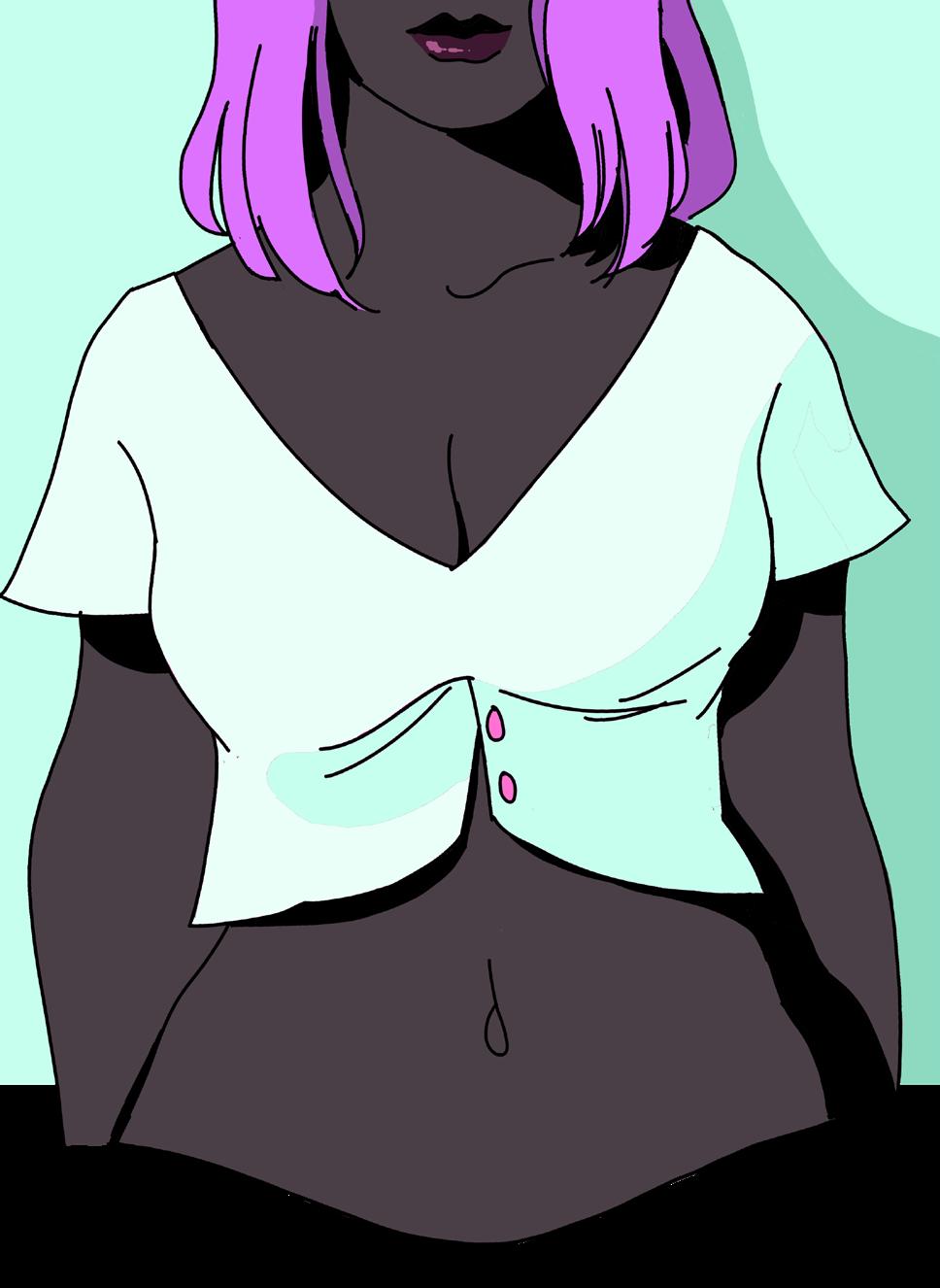
Fashion Youtuber Karina Gomez takes a similar stance. In one video entitled Is it a ft or is she just skinny? she takes Y2K-inspired outfts worn by “skinny girls” and recreates them on a larger body. While shedding light on the challenges presented by a culture that has long favored a certain body type, Gomez simultaneously reclaims fashions orig-

24
inally deemed ‘unfattering’ for plus sized individuals by creating fun outfts and deciding what she feels best in.



Ultimately, fashion—Y2K or not— should be about what makes you feel best—free from the dictation of arbitrary societal standards. The decision to opt into Y2K fashion is a completely personal one, but one thing remains clear: your body does not need to be a factor. No matter what latest fashion trend has cycled into popularity, your body should not cycle with it.
As a generation known for advocacy and inclusivity, Gen Z has an opportunity to reclaim Y2K fashion and prove it does not need to come with fatphobic strings attached. We have the power to call out toxic rhetoric within the fashion media industry and demand change for a more size-inclusive world. And, we have the agency to wear whatever we decide makes us feel best in our bodies. After all, you only live once, so why not use once to celebrate the body you’ve got?
GRAPHICS BY KATHARINE SCHMIDT



OPINION 25
Two summers ago, I planted trees near Thunder Bay. This was an unprecedented decision for me: I am a vicious materialist and I wear a lot of pink. I had no experience in camping, nor engaging in demanding physical activity. Hold that image in your mind and place it in the backwoods of northern Ontario. Plus, during the height of the pandemic, I was spending most of my time inside, wallowing in the doom-andgloom. I was addicted to social media and deeply unhappy. Suffce to say, when I told people, they laughed in my face. And yet, motivated by the fact that my family members had placed actual monetary bets on how long I would last (the most generous being two weeks), I did not back out. Not letting my fear get the best of me was the best decision I ever made. In the pine and spruce forests of Ontario and Alberta, I re-learnt myself. Alone for hours, through scorching heat and freezing rain, I was forced to. The only images I had to rely on were the ones that lived with me in the wilderness — to let anxiety or self-hatred paint over those images was to fail. Frequently, planters will tell you it is impossible to capture the experience in words, describing it as both the most diffcult and best thing they have
ever done. The best I can do is name it as the only moments in which I have been present. Firmly settled in myself, rooted to the ground, I was intimately connected to the earth around me. I opened my eyes to the feeling of hot summer air in my lungs and the taste of wild strawberries in my mouth. I painted the world over in pastel yellow and vibrant purple fowers. I took comfort in the way a little blue butterfy would fit past me whenever I felt like giving up. I wanted to give up so many times. Trekking up a vertical hillside with the crushing weight of two hundred baby trees belted to
your hips will do that to you. So will the fear of being mauled by a bear, or impaled by a moose. Surrounded by dense forest, I often convinced myself I felt the yellow eyes of a murderous grizzly on my back. I was so focused on the imaginary gaze of some beast or the texture of the soil as I bent to plant my next tree that I forgot to care how I looked to myself, or, acres away from the closest human, to others. Caked in dirt, stripped of luxuries like a bedroom or a shower, my closest companion on the block was
Confessions of A Tree Planter



 BY ARIEL TOZMAN
BY ARIEL TOZMAN


26
the northern Canadian landscape. For eight or more hours, I slammed my shovel into the ground repeatedly. I emerged with increasingly purple feet and cuts all over my legs from tripping over wet logs and twigs. But, delivered from the bush to my friends each day, I was grateful. I owe that newfound sense of gratitude to the absence of my phone. Stripped of access to social media, I ceased to obsessively compare myself to others. In the terrifying, breathtaking bush, the world shifted beyond the borders of my anxiety, borders drawn according to the painted and digitized worlds of others. My vision simultaneously narrowed to how small I stood in the shade of those pine trees and expanded to the way black spruce leaves look as if they’re fipping you off. For the frst time in so long, the stranglehold social media had locked me in loosened enough that I could breathe. Muddy and exhausted, but free, I took stock of who I was when no one was around to see but the broad pines and middle-fngered leaves.
A book I once read called Ways of Seeing by John Berger intimately captures the way social media had smothered my sense of person. It talks about how people socialized as women are conditioned to envisage themselves by capitalism/the patriarchy, explaining how the pro-



liferation of the digital image has deepened our power of observation. Women are acutely perceptive, rendering us extra-sensitive to how others receive us. Somewhere in this cycle the digital image had taken over my life, objectifying me, repressing me, hopelessly and endlessly leaving me alone with my refection – that mirror image of myself I was never satisfed with. As the camera rendered me consumable, I succumbed to the economic principle of obsoletion, in which my body and hair and face were interchangeably tossed aside and recycled – like the plastic parts of a Polly Pocket. I lived my life through mirrors, in endless loops of self-hatred and self-obsession. As you might have felt yourself, this age-old dance is pretty exhausting and pointless; after all, we can never attain the unattainable. We will never be good enough for ourselves as long as we remain caught in the spiderweb of digital complacency. Overloaded by the negative feedback I received from my phone or the minute rejections I read in those around me, I coped with my anxiety by avoiding the things that scared me. But you know that saying – that life starts outside of your comfort zone? Unwittingly released from my screen, I gave myself over to the wilderness; alone in the woods, my sense of self rematerialized. In teaching me to stop letting others affect how I feel about myself, tree planting has awakened me to earth’s many graces, from little blue butterfies to the smiles of the people I love. In the grand scheme of things, we are like four-second shooting stars to the earth’s four-billion-year history, so what’s the point of spending our time comparing ourselves to others? Of letting what we think others are thinking affect how we live our lives? Put down your phone. Go outside. Live like no one is watching.


OPINION 27
GRAPHICS BY KATHARINE SCHMIDT
BY HENRY CEFFALIO
PROMISE VS PATTERN The Untold Potential of Victor Wembanyama

he frst time I saw a photograph of Victor Wembanyama, I thought I caught sight of some sort of apparition. Few teenagers in the history of basketball — perhaps the history of the modern world — have had such lofty expectations bestowed upon them. The French teenager will be poised to further transform the landscape of professional basketball when he is selected at the NBA draft in June.
Wembanyama’s height is listed at 7’4” by the Metropolitans 92, the French professional team he plays for. Some place his height at 7’5” or even 7’6”, and he has an eight-foot wingspan. Remember, Wembanyama is nineteen, the age of a McGill U2 student, and has not fnished growing. There are only a handful of players in NBA history taller than Wembanyama. The majority of them had neither the coordination nor the agility to be productive NBA players. Only two recent players eclipse Wembanyama in size: Tacko Fall at 7’6” and Boban Marjanović at 7’4”. Fall and Marjanović are professionals almost exclusively because of their height. There has never been a player in NBA history taller than 7’3” who can shoot, drive, and pass with the profciency expected of an NBA guard.
But Wembanyama can. Wembanyama shoots excellently from three and can adeptly create his own shot off the dribble. Wembanyama can score by maneuvering inside the arc and hitting contested mid-range fadeways. His pumpfakes and spins generate space at the rim and he is blessed with creativity and intuition as a passer. He glides off the ball with speed and grace and demonstrates exceptional instincts, timing, and, of course, length as a rim protector.
This is why Victory Wembanyama is absolutely terrifying: Nobody of his height in the history of the sport has ever possessed his shot-making, range, and fuidity.
Wembanyama is not just the consensus frst overall pick in 2023 — he’s the best prospect since LeBron James, and possibly the most coveted amateur talent in the history of professional sports.

Sports Illustrated’s 2002 “Chosen One”
profle of a teenage LeBron James highlighted his remarkable explosiveness and skill as a playmaker. LeBron was an incredible prospect, but he was not unprecedented; his attributes had been seen before in some form. The size and skill combination of Wembanyama, however, is unmatched by any individual to ever step foot on a basketball court.
Kevin Durant is perhaps the most accurate comparison to Wembanyama. Durant is 6’10” and a preeminent shooter. He can thus move to anywhere on the foor and hoist a jumper that can’t be well-contested due to his height and his shot’s high-release point. Durant’s fusion of height and shot-making produced one of the fnest players in the modern NBA.
Wembanyama is more than a half-foot taller than Durant. At Victor’s height, it is a physical impossibility to stop him from shooting the basketball. If Durant weaponized this combi nation to an MVP, it is truly untold how far Wembanyama can push it. At 7’4”, he also has the tools to develop into the best rim-pro tector in the game. In a few years he might be the best offensive and defensive player in the game, an unequaled achievement.
Victor will not play an NBA game until October but he has already un settled the fabric of the league. A host of teams are purposely losing this seasoning for the opportunity to draft Wembanyama. The draft’s frst overall pick is decided by a lottery that awards the greatest odds to the teams with the worst record. The Houston Rockets, San Antonio Spurs, and Detroit Pistons have had dreadful seasons and sit at the very bottom of the standings. But this is
what they want. They’ve traded away assets and neglected to bolster their roster to ensure they will be allotted the best odds to draft Wembanyama.
Likewise, the draft lottery awards each team who misses the playoffs a chance at the frst overall pick. Teams hovering in the middle of the standings made strategic trades to downgrade their current roster at the trade deadline.
The Portland Trail Blazers parted ways with Gary Payton II and Josh Hart rather than adding depth behind Damian Lillard. The Utah Jazz dealt Mike Conley and the Washington Wizards traded Rui Hachimura. Each of these franchises could feasibly make the play-in tournament or the playoffs. However, their general managers preferred to steer their team south for
28
In a few years he might be the best offensive and defensive player in the game
T
PHOTO BY THOMAS S
PATTERN

yama has already changed the standings, but his likely stardom in the NBA might reconstruct the NBA’s geography. North America tends to import their giants from overseas. Many of basketball’s tallest players have been foreign: Fall is from Senegal, Marjanović is from Serbia, and 7’6” Yao Ming is from China. Indeed, only seven of the tallest twenty-six players in NBA history are from the United States. These players frequently bring the sport to a new part of the world. Ming is considered one of the most infuential players in basketball history because he helped the NBA become the most popular sports league in China. 7’6” Manute Bol from Sudan and 7’2” Dikembe Mutombo from the Democratic Republic of the Congo have extraordinary humanitarian accomplishments and helped establish basketball facilities and youth camps on the African continent. When someone is that tall, even if they’re not from a traditional basketball nation, they come to play in North America but force the game to expand globally. European and African players have been immensely successful this decade. Luka Dončić from Slovenia, Joel Embiid from Cameroon, Nikola Jokić from Serbia, and Giannis Antetokounmpo from Greece are arguably the four best players in today’s NBA. These stars have made the NBA more accessible and popular to overseas fans. In 2019, Reuters reported a 200% increase in NBA viewership in Serbia, Jokic’s country. In 2022, they reported a 272% increase in NBA viewership in Cameroon, the home nation of Joel Embiid. Adding a French superstar to this list might intensify this trend to an unknown new status quo. Basketball is an American sport, but if the majority of the world’s best players come from Europe and Africa, the center of basketball could veritably be pushed overseas. NBA fans make the teenager from the Paris suburbs seem ethereal and godlike, with capacities beyond what any mortal could do. Wembanyama, like LeBron, might somehow exceed these mammoth expectations. But some promises are just too good to be true. History has shown

us that there is one obstacle that constantly undermines players who are the size of Wembanyama – injuries. There have only been twenty-six players in NBA history who stand 7’3” or taller. Of those, there are only a handful - I count seven - who have had something of a noteworthy NBA career. Nearly all of these seven skilled skyscrapers were too injury-prone to fulfll their like-sized potential. Hopefully Wembanyama’s story will not follow the arc of Yao Ming. 7’6” Ming was drafted frst overall by the Rockets in 2002 and quickly became the best player ever in his height range. He excelled as a scorer in his frst few seasons, boasting strong post moves and a soft jumpshot. Ming was one of the most valuable
injuries. He missed the entire 2018-19 season and has played more than sixty games in a season just three times. 7’4” Ralph Sampson retired at the age of thirty-two due to knee injuries. Of each player above 7’3”, there are only two who had somewhat prolifc NBA careers, never missed an entire season, and were not forced to retire because of an injury. Those two are Rick Smits from the Netherlands and the late Mark Eaton, neither of whom made more than one All-Star team. Injury potential is the critical caveat to consider when we stare up in awe at Victor Wembanyama. Nobody of his height has ever maintained a level of sustained All-Star production for longer than a couple of seasons, and injuries have
centers of the early 2000’s but saw his career quickly derail due to a myriad of lower-body injuries. From 2005-2009, Ming missed substantial portions of seasons due to injuries like osteomyelitis, sprained ankles, a broken knee, and stress fractures. He retired in 2011 at the age of thirty-one due to a third fracture in his left foot and never made as much as the Western Conference Finals.
Nearly every talent at this height has a similar story. The career of 7’3” Latvian Kristaps Porziņģis has been marred by
not become less frequent in the 2020’s. Predicting Wembanyama’s career requires a negotiation between possibility and precedent, between potential and pattern. His height coupled with his ability to score from any place on the court is unmatched in the history of the sport. His story in the NBA, whatever it may be, will be seismic. If he defes the injury precedent, we will certainly be looking at the NBA’s next young star, and possibly its next all-time great.
CEFFALIO
29 SPORTS
GRAPHIC BY LINDSEY HARRISON
5’10” 6’6” 7’3” 10’
Regulation basketball Hoop Victor WEMBANYAMA average nba player average man
o boehly s lan for helsea
BY ZACHARIE BOUQUET
helsea F.C. has made many headlines since the beginning of this season. Very few of which have been due to good football performance. A lot happened to Chelsea in 2022. The club parted ways with Roman Abramovitch, the Russian multi-millionaire who headed the club for nearly two decades, after Vladimir Putin’s invasion of Ukraine. Chelsea had great success behind Abramovitch, winning Premier Leagues, Champions Leagues, Europa Leagues, and other major trophies. Abramovitch elevated Chelsea to the status it enjoys today as one of the preeminent clubs in England and the world. Todd Boehly, co-owner of the Los Angeles Dodgers and Sparks and majority owner of the Lakers, bought the club at the end of May 2022 following Amramovitch’s departure. Although the season was fnished when Boehly arrived, the 2022 summer transfer window was open. Fans saw Todd Boehly’s intriguing new strategy for Chelsea. Many players left Chelsea during the transfer window last summer. Antonio Rudiger and Andreas Christensen, both central defenders with their contracts coming to an end, signed to Real Madrid and FC Barcelona, respectively. Marcos Alonso left for Barcelona and Timo Werner returned to Leipzig. Vice-captain Jorginho signed for Arsenal on the last day of the January transfer window. The most significant change, however, were the new players that Boehly added to his squad. Boehly inked younger players to
lengthy contracts, a rather unprecedented team-building strategy. During the summer transfer window, Chelsea signed eight new players, including Marc Cucurella for six years and Wesley Fofana for seven years. Boehly signed a slew of players under twenty-two years old during the January transfer window: he signed Mykhaylo Mudryk and Enzo Fernandez for eight and a half years; Benoît Badiashile and Malo Gusto for seven and a half years; David Datro Fofana for six and a half years; and Enzo Fernandez was signed in the last hours of the January transfer window for an English Premier League club record fee of 121 million euros.
Todd Boehly invested more than half a billion euros in the club during the last two transfer windows, a fgure almost
equivalent to what Liverpool spent in the past ten years. Since the summer, Chelsea has the worst transfer window balance of any club in the world. Unfortunately for Chelsea, the money invested is not being followed by good performances. The club, usually fghting for a place in the top four, is currently tenth in the Premier League and has already been eliminated from the FA Cup and the Carabao Cup. The investments do not seem to have come to fruition when looking at the current Premier League table. But Boehly’s designs are for the future.
Todd Boehly signed talents that are young and have great potential, a strategy which differs from Abramovitch, who bet on experienced and proven players. The ultimate success of Boehly’s strategy will be seen when these players reach their prime, still a few years down the road.

Chelsea’s unrestrained transfer window is bound to put them in discussions over Financial Fair Play (FFP), a set of regulations that prevent clubs from spending more than what they earn. FFP restrictions were imposed by UEFA in 2009 to help an increasing number of clubs that were generating losses and not able to repay their debt.
If the rules are not respected, clubs risk fnes, the withholding of prize money, player transfer bans, or even disqualifcation from European competitions.
The lengthy contracts are a way for Boehly to escape Financial Fair Play. The transfer fees paid can be amortized over the length of the contract. Hence, the transfer fee divided by the length of the
30
Todd Boehly, new owner of Chelsea F.C.
PHOTO BY ERIC VAN DEN BRULLE
contract along with the salary of the player will be computed in the club’s costs for one year. This means the costs for Chelsea are dispersed over the length of the contract. Lengthy contracts have enabled Chelsea to spend aggressively on transfers while hopefully still being able to do business within the limits of the Financial Fair Play. Indeed, FFP is only evaluated a posteriori, so we will only know in a couple of years if Chelsea has respected the rules or not. Todd Boehly, a part owner of the Lakers, could also have been inspired by the NBA, where lengthy contracts are the norm. These lengthy contracts are very risky; young players do not always meet expectations and unsuccessful prospects can hurt the team in the standings. Underperformance from young players would harm Chelsea’s revenue and put the club in trouble with Financial Fair Play. A large factor determining the revenue that teams generate is their success in the Premier League, Champions League, and domestic cups. Furthermore, clubs generate revenue from jerseys and ticket sales contingent on the team’s performance. Chelsea’s risk to violate FFP increases if young players on longer contracts fail to fulfll their potential. By contrast, an advantage of these lengthy contracts is the proft Chelsea could potentially make. Chelsea has never bought players with the idea of developing them and selling them at a later stage for a proft, in the vein of clubs like Monaco or Borussia Dortmund. However, they might be incentivized to do this if the market value of some of their recruits increases with time.
Manager Graham Potter was able to play seven new recruits in the last sixteen of the Champions League. As outlined in the Regulations of the UEFA Champions League, clubs are able to enroll an unlimited number of new players on “list B” only if they are born after January 1, 2001. This is the case for all of Chelsea’s new recruits, a fact Boehly surely considered when screening for new players. This is excellent news for Graham Potter, as he will be able to take advantage of the skills of these new talents in order to go as far as possible in the Champions League.


not looking to extend Ngolo’s contract. Thiago Silva is also coming to the end of his contract in June, and may see his contract extended an extra year, granted the Brazilian defender is thirty-eight and approaching the end of his career.
Chelsea may also sell players with whom they are unsatisfed. Graham Potter does not seem to want Pierre-Emerick Aubameyang in his plans. Likewise, Hakim Ziyech and Christian Pulisic have not lived up to their expectations and might be leaving Chelsea this summer. Todd Boehly would not be against selling these players, as Christopher Nkunku is set to join the Blues during the summer, and Chelsea could even sign João Félix for a signifcantly high fee. Félix is currently on loan at Chelsea until the end of the season and if the club deems he adds value, they could buy him permanently. This upcoming transfer window will represent another period of critical decision-making for Boehly.
at a later sta e
Boehly will also have to replace some of the players that are arriving at the end of their contracts this summer. Midfelders N’golo Kanté and Jorginho have played an important role at the club for many years but will reach the end of their contracts at the end of the season. Jorginho has been sold to London neighbors Arsenal during the Winter transfer window and Chelsea is
Boehly may also pursue a network of clubs across the globe, similar to the group City football, which owns Manchester City, Melbourne City, New York City, and others; or Redbull, which owns fve football clubs, including two Champions League sides. This is an idea that Boehly developed in an interview with SALT Venture Group which if he decides to execute would be well into the future, considering all of his current spending. This strategy would nevertheless allow Chelsea to loan their young players to other clubs in the network, usually in less competitive leagues, in order to develop them and then return to Chelsea prepared to play Premier League football.
The results have not been very good for Chelsea since the beginning of the season, in part due to the lack of time that Thomas Tuchel’s replacement, Graham Potter, was given. Potter has never managed a big club like Chelsea with high expectations placed upon them by the board and the fans. Potter has also dealt with a long list of injured players during the couple of months he has been the manager.
Boehly’s recruitment strategy is ambitious: never has such a sum been invested in that little amount of time in club football. Only time will tell whether his plan to sign young, high-potential players to lengthy contracts will successfully avoid FFP regulations and yield success on the pitch for Chelsea.
SPORTS 31
helsea has ne er ou ht players with the i ea of e elopin them an sellin them
1 1 4 11 1 out 1
GRAPHICS BY LINDSEY HARRISON


























 CLAIRE CHANG, EXECUTIVE EDITOR
CLAIRE CHANG, EXECUTIVE EDITOR
































































 GRAPHICS BY VIVIAN CROOKS
GRAPHICS BY VIVIAN CROOKS
















 BY BÉRENGÈRE FOUQUERAY
BY BÉRENGÈRE FOUQUERAY








 BY Alia Shaukat
BY Alia Shaukat










































 BY ARIEL TOZMAN
BY ARIEL TOZMAN



















